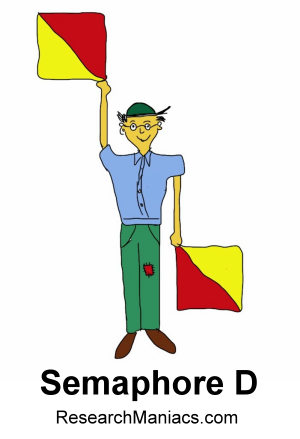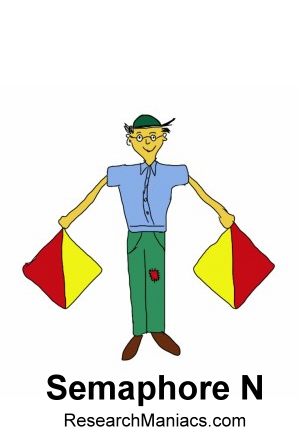The Peace Sign

Learn more about The Peace Sign
The peace sign was designed by artist Gerald Holtom in 1958. It was made for a march to support a Campaign for Nuclear Disarmament.
To understand how Holtom designed the peace sign, you must first know what flag semaphore is. A person standing far away can use flags to signal letters and meanings. These signals are called semaphores. The semaphore signal for N is that both flags are held at a 45-degree angle downwards to create an upside down V. The semaphore signal for D is one flag pointing directly up and one flag pointing directly down, creating a straight vertical line. See semaphore illustrations below for better understanding:


The semaphore letter N with the person holding both flags out and downwards looks like a person in despair. Holtom said that is how he felt about Nuclear Disarmament. He drew himself! Reports indicate that Holtom regrets this, and wishes the peace symbol showed happy arms going upwards instead.
Some people may argue that the peace sign owes its success to the fact that it is easier to draw than Picasso's peace dove.
Holtom first designed the peace symbol as a Christian cross inside a circle, but the Christian community did not like the idea, so Holtom discarded the design.
Gerald Herbert Holtom was born in 1914 and died in 1985. He worked at Direct Action Committee against Nuclear War and designed the Peace sign at age 44.
You can actually see the original sketches by Gerald Holtom at the Commonwealth Collection in Bradford, England.
The page above was created by Research Maniacs. Our Peace Sign page answers questions like: What is the Peace sign? Where does the peace sign come from? Who designed the peace sign? How was the peace sign designed? Who created the peace sign? Who made the peace sign?
